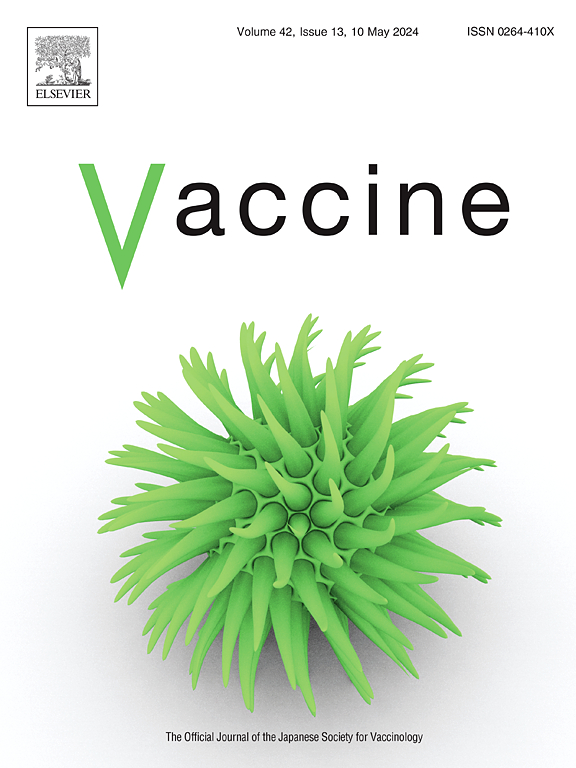Landscape analysis of invasive non-typhoidal salmonella (iNTS) disease and iNTS vaccine use case and demand: Report of a WHO expert consultation
IF 4.5
3区 医学
Q2 IMMUNOLOGY
引用次数: 0
Abstract
Invasive disease caused by non-typhoidal Salmonella serovars (iNTS) occurs with increased risk in the presence of other comorbidities such as malaria, HIV, malnutrition, anaemia and sickle cell disease. While infection with non-typhoidal (NTS) serovars often results in self-limited enterocolitis in high-income settings, in sub-Saharan Africa (SSA) where these risk-comorbidities are common, an invasive (iNTS) disease phenotype is seen, associated with up to 20 % case-fatality ratio, and antimicrobial resistance is both significant and growing. The need to evaluate the potential public health value of vaccines against iNTS disease is increasingly being recognized, and several candidate vaccines are in early development. A better understanding of the global burden and epidemiology of iNTS disease, as well as the potential public health and socio-economic benefits that iNTS vaccines may offer is fundamental to support and justify the investments in vaccine development. In addition, the pathways for licensure, policy recommendations and eventual vaccine prioritization and use in low- and middle-income countries (LMICs) need to be defined.
Here, we report on the proceedings of an expert consultation held on 29 November – 1 December 2021 as part of an overall project to develop a Full Value of Vaccines Assessment (FVVA) for iNTS vaccines and in addition to more recent iNTS vaccine developments. Experts at the consultation reviewed the current evidence on iNTS disease and discussed knowledge gaps to be addressed to accelerate vaccine development, licensure and introduction, as well as LMIC perspectives on potential iNTS vaccine use and demand. The learnings from this consultation are critical inputs to inform remaining work under the iNTS FVVA project.
由非伤寒沙门氏菌血清型(iNTS)引起的侵袭性疾病在伴有其他合并症(如疟疾、艾滋病、营养不良、贫血和镰状细胞病)时发生的风险更高。在高收入地区,非伤寒型(NTS)血清型的感染通常会导致自限性小肠结肠炎,而在撒哈拉以南非洲地区(SSA),这些风险并发症很常见,因此会出现侵袭性(iNTS)疾病表型,与高达 20% 的病死率相关,而且抗菌药耐药性非常明显且不断增加。越来越多的人认识到有必要评估针对 iNTS 疾病的疫苗在公共卫生方面的潜在价值,目前有几种候选疫苗正处于早期开发阶段。更好地了解 iNTS 疾病的全球负担和流行病学,以及 iNTS 疫苗可能带来的潜在公共卫生和社会经济效益,对于支持和证明疫苗开发投资的合理性至关重要。在此,我们报告了 2021 年 11 月 29 日至 12 月 1 日举行的专家咨询会的情况,该咨询会是为 iNTS 疫苗制定疫苗全面价值评估 (FVVA) 的总体项目的一部分,此外还报告了 iNTS 疫苗的最新进展。与会专家审查了有关 iNTS 疾病的现有证据,讨论了为加快疫苗开发、许可和引进而需要弥补的知识差距,以及低收入国家对 iNTS 疫苗潜在使用和需求的看法。从此次咨询中汲取的经验对 iNTS FVVA 项目的剩余工作具有重要的参考价值。
本文章由计算机程序翻译,如有差异,请以英文原文为准。
求助全文
约1分钟内获得全文
求助全文
来源期刊

Vaccine
医学-免疫学
CiteScore
8.70
自引率
5.50%
发文量
992
审稿时长
131 days
期刊介绍:
Vaccine is unique in publishing the highest quality science across all disciplines relevant to the field of vaccinology - all original article submissions across basic and clinical research, vaccine manufacturing, history, public policy, behavioral science and ethics, social sciences, safety, and many other related areas are welcomed. The submission categories as given in the Guide for Authors indicate where we receive the most papers. Papers outside these major areas are also welcome and authors are encouraged to contact us with specific questions.
 求助内容:
求助内容: 应助结果提醒方式:
应助结果提醒方式:


